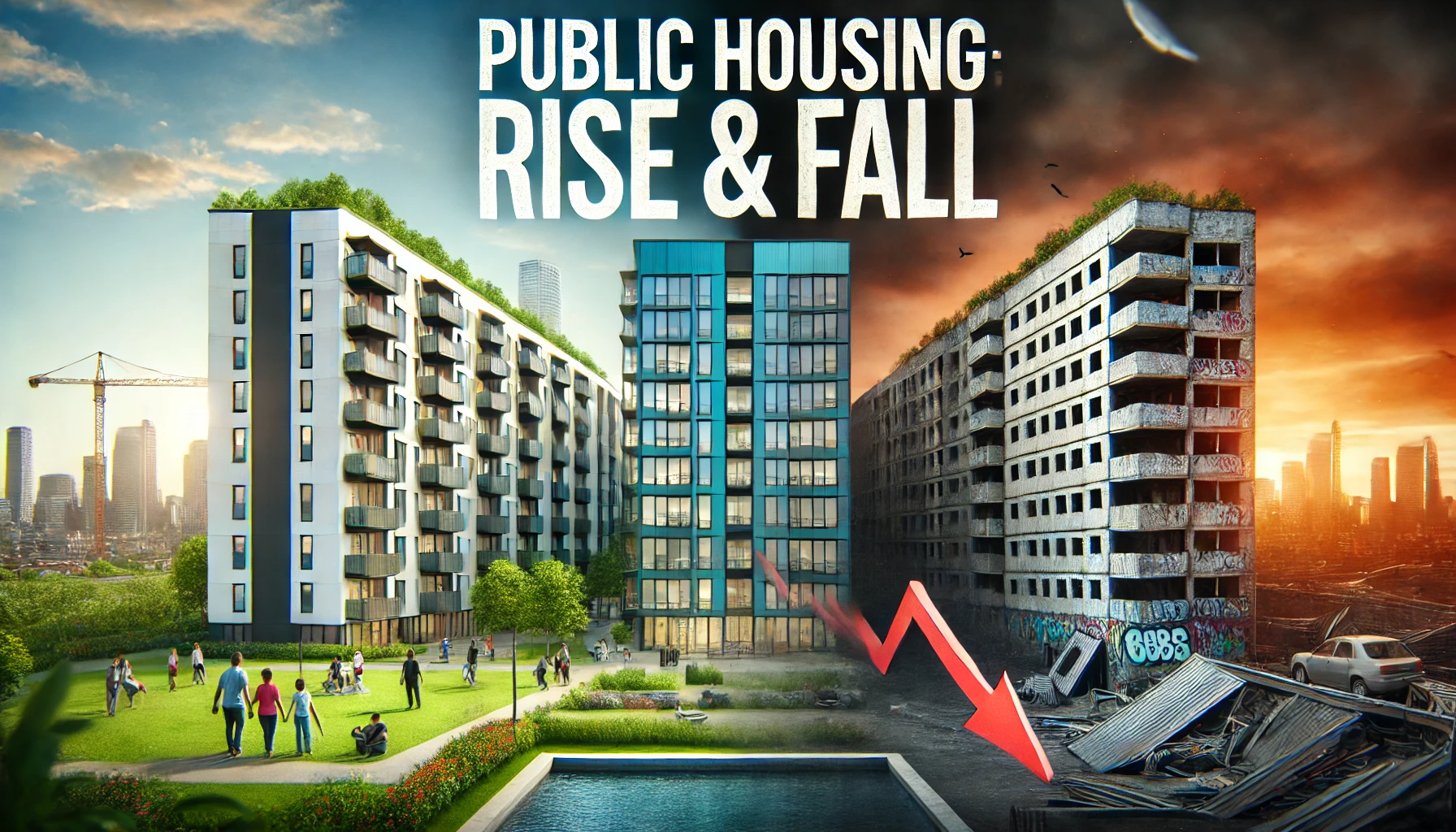By Diyi Zhang
Public housing was once considered the answer to urban poverty. Governments worldwide built large-scale housing projects to provide stable, affordable homes for low-income families. However, over time, many of these developments fell into decline. Some were demolished, while others became symbols of economic hardship and social isolation.
What caused public housing to shift from a promising solution to a struggling system? More importantly, can we learn from past mistakes to create better housing policies today?
The Rise of Public Housing
In the early 20th century, cities struggled with overcrowding and poor living conditions. Many low-income families lived in tenement housing that lacked sanitation, ventilation, and safety. Governments stepped in to solve the problem by constructing public housing.
The United States passed the Housing Act of 1937, which funded public housing projects to replace slums with modern apartments. After World War II, the Housing Act of 1949 expanded these efforts. Cities like St. Louis and Chicago built large public housing developments, including Pruitt-Igoe and Cabrini-Green.
Europe also embraced public housing. In the United Kingdom, the government developed council estates to provide stable housing for working-class families. Similarly, France, Germany, and Sweden invested in large-scale public housing to accommodate urban populations.
For a time, these efforts worked. Public housing provided stability, affordability, and access to essential services. However, major problems soon emerged.
Why Public Housing Declined
Despite early successes, many public housing projects experienced serious issues that led to their downfall. Several key factors contributed to this decline:
1. Poor Maintenance and Underfunding
Governments failed to allocate enough funding for repairs and upkeep. As a result, buildings deteriorated, creating unsafe living conditions. Broken elevators, leaking roofs, and poor sanitation became common. Without regular maintenance, public housing developments quickly fell into disrepair.
2. The Concentration of Poverty
Originally, public housing was designed for working-class families. Over time, economic changes led to increased unemployment in these communities. Without economic diversity, poverty became concentrated in public housing, leading to social isolation and fewer opportunities for residents.
3. Flawed Design
Many public housing projects followed the “tower in the park” concept, which placed high-rise buildings in large open spaces. While architects believed this would create a modern and functional environment, these designs often resulted in poor social interaction and safety concerns. Dimly lit stairwells, long corridors, and isolated courtyards became hotspots for crime.
4. Social Stigma
As conditions worsened, public housing developed a negative reputation. Many people associated these projects with crime, neglect, and government failure. This perception discouraged investment and made it harder for residents to improve their living conditions.
By the 1970s and 1980s, many governments abandoned large-scale public housing projects. The Pruitt-Igoe housing project, once seen as a model for modern public housing, was demolished in 1972 after just 16 years. Other cities followed suit, replacing public housing with mixed-income developments and voucher programs.
Lessons for the Future
The failure of public housing was not inevitable. Some countries, such as Singapore and Austria, have successfully maintained public housing programs through strong governance and continuous investment. What can cities do to improve public housing today?
✅ Mixed-Income Housing: Integrating different income levels prevents social isolation and concentrated poverty.
✅ Sustainable Funding: Governments must allocate ongoing resources for maintenance and community services.
✅ Better Design: Safe, well-connected, and people-centered layouts create healthier communities.
✅ Flexible Housing Models: Smaller, community-driven developments offer more adaptable solutions than large-scale projects.
✅ Resident Participation: Involving tenants in management decisions leads to better maintenance and stronger communities.
Can Public Housing Be Reimagined?
Affordable housing remains a critical issue in cities worldwide. While large-scale public housing projects have declined, the need for safe and affordable housing continues to grow. The failures of the past were not caused by public housing itself, but rather by poor planning, lack of investment, and systemic inequalities.
With the right planning, funding, and community involvement, public housing can work. The key question is: will governments invest in long-term solutions, or will history repeat itself?
Let’s continue the conversation—should public housing make a comeback? Share your thoughts in the comments!

Leave a Reply